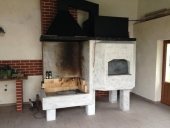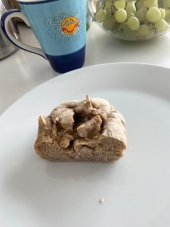posted 1 year ago
Dan,
I just measured the weight of the brick I made - the first recipe. The second was partially eaten by my sheep.
The weight of 20x14.5x7.5 cm brick is around 4 kg which translates to specific gravity of 1.23 kg/l.
For comparison a handmade fired clay brick is 1.75 and compressed earth block is 1.87 (cob could be slightly less). So it would not offer any substantial insulation value, but still better than solid masonry materials. Now I'm thinking they could be used as load bearing.
For example a hemp block from HempBlock in Australia has gravity of 0.37. It means they used much less aggregate (if any). It would be possible if the straw was finely chopped, then adding binder could be sufficient.
Now, after weighing the brick I'm thinking that I may use perlite concrete as the infill, instead of straw concrete, because I'm not sure how to chop large amount of straw. For plaster I use scissors. I could try my chipper/shredder or rock crusher.
Very light perlite concrete that I made has specific gravity of 0.2 and excellent thermal conductivity of 0,06 W/mK. I used 10 parts of perlite (1-5 mm) and 1 part of portland cement and enough water to make it slushy.
It's the weakest perlite concrete, but also having highest insulating value. Cement to perlite ratio can be increased from 1:10 up to 3:10.
I'm going to make a test with shorter straw fibers and cement only.










